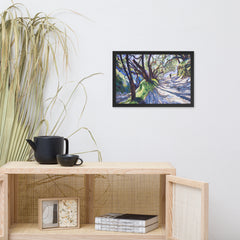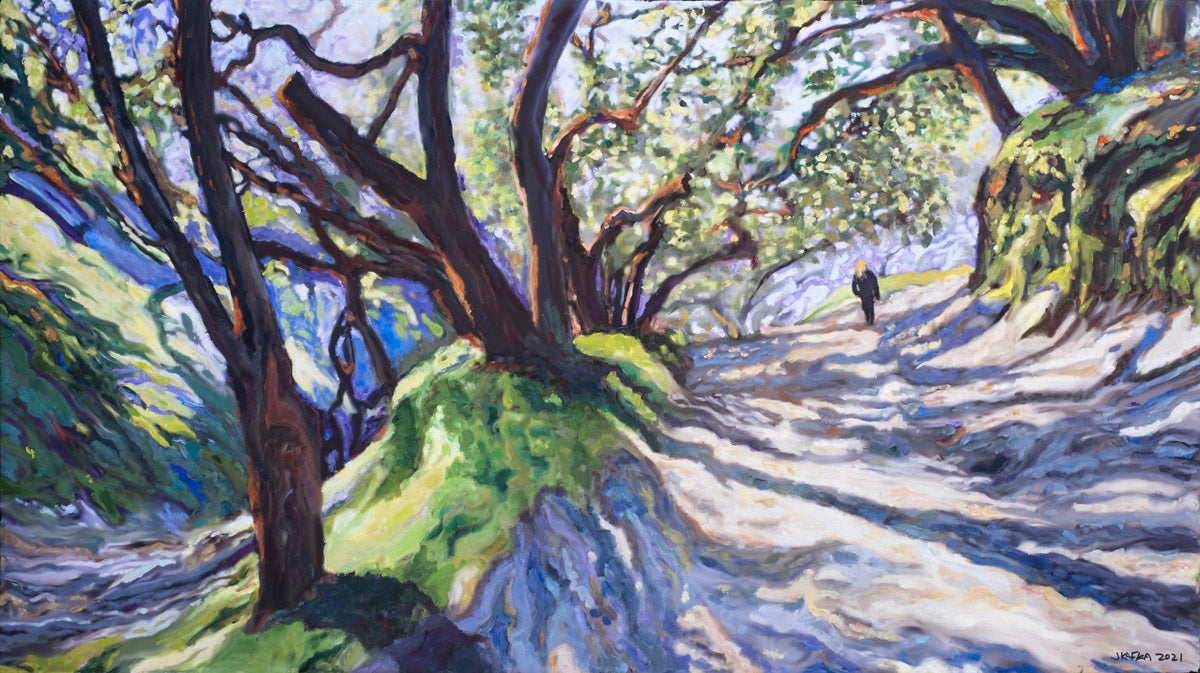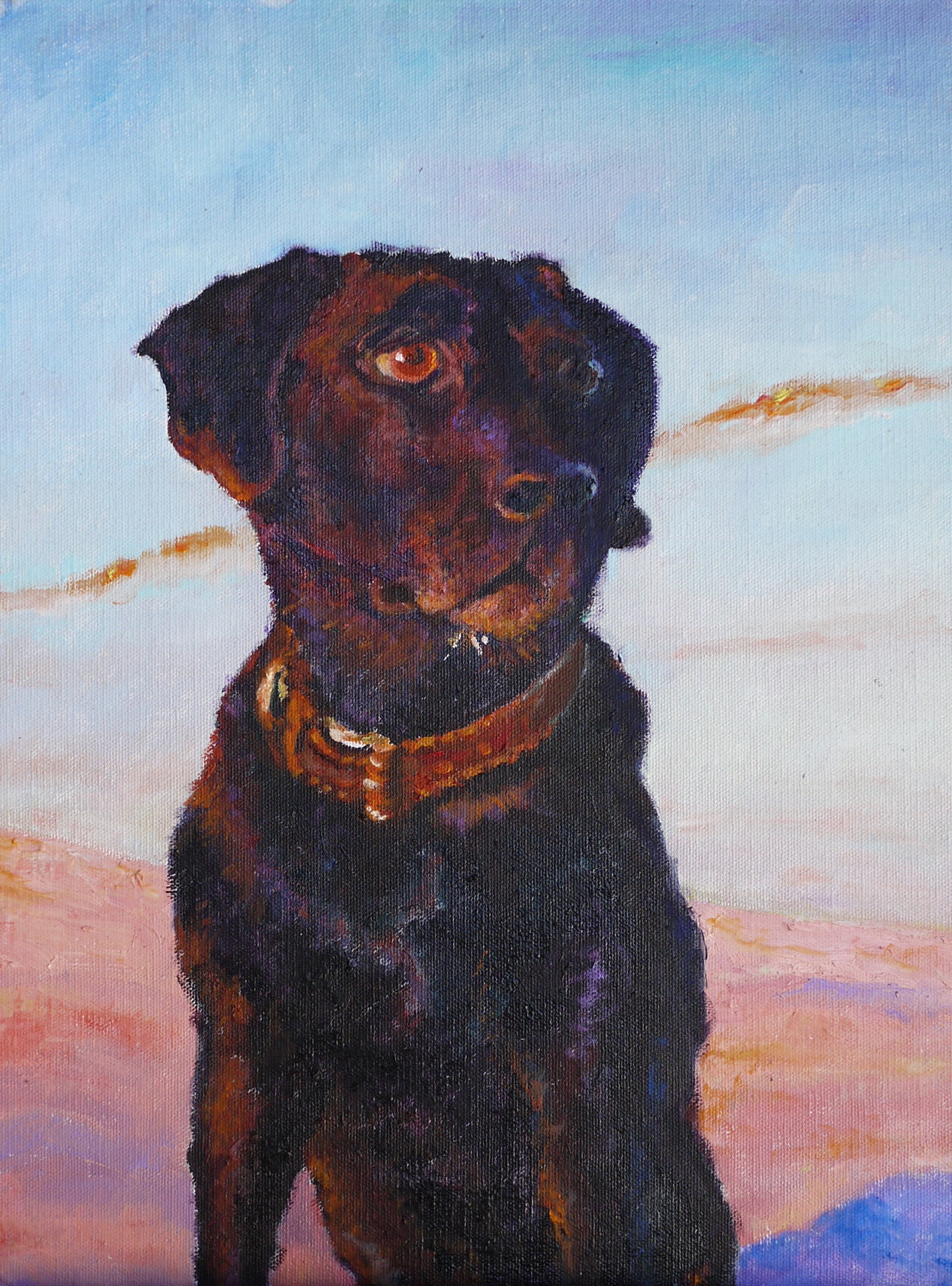Landscape art has long been celebrated for its ability to capture the beauty and grandeur of the natural world. From the serene, rolling hills of the countryside to the dramatic, towering peaks of the mountains, landscape artists have sought to convey the essence of the outdoors through their work. One of the most captivating aspects of landscape art is its vibrant and diverse color palette, which allows artists to evoke the full spectrum of emotions and experiences that nature has to offer.
This exploration into the use of color in landscape art will take us on a journey through the genre's rich history, allowing us to investigate how artists have employed color to capture the ever-shifting emotions of the natural world. From the lush greens of forests to the fiery reds of sunsets, we will discover how color has been harnessed as a powerful tool to connect viewers with the landscapes depicted on canvas.
The Birth of Landscape Art: A Journey Through Time
The origins of landscape art can be traced back to ancient civilizations, where it often served as a backdrop for religious and mythological narratives. In these early works, color was used sparingly and symbolically, with artists employing a limited palette to convey specific meanings. For instance, in ancient Egyptian art, the color green symbolizes fertility and rebirth, while blue represents the Nile River, a life-giving force in their desert environment.
As art and culture evolved, so too did the approach to landscape art. During the Renaissance, artists like Giorgione and Albrecht Dürer began to experiment with landscape as a subject in its own right. It was during this period that color began to play a more prominent role in landscape paintings. Giorgione's "The Tempest" and Dürer's detailed watercolors of the natural world showcased the artists' growing fascination with the interplay of light and color in nature.
The Rise of Impressionism: Capturing the Play of Light and Color
In the 19th century, a radical shift occurred in the world of art with the emergence of the Impressionist movement. Led by artists like Claude Monet, Pierre-Auguste Renoir, and Camille Pissarro, Impressionism sought to capture the fleeting moments and ever-changing effects of light and color in the natural world. For these artists, color was not just a representation of the landscape but a dynamic force that could convey mood, atmosphere, and emotion.
Impressionist painters often worked en plein air, or outdoors, to directly observe and capture the shifting colors of landscapes. They abandoned traditional, academic techniques in favor of loose, brushy strokes and a vivid, vibrant palette. Monet's "Water Lilies" series, for example, explores the myriad shades of green, blue, and purple that dance upon the surface of a pond at different times of day and in various weather conditions. The play of light on water becomes a symphony of color, inviting viewers to immerse themselves in the tranquil beauty of the scene.
Expressionism and the Emotional Power of Color
While Impressionism celebrated the fleeting beauty of the natural world, the Expressionist movement that followed delved deeper into the emotional power of color in landscape art. Expressionist artists, such as Edvard Munch and Wassily Kandinsky, used color to convey their inner feelings and experiences of the natural world. The landscape became a canvas for their own emotions, with color serving as a direct expression of their state of mind.
In Munch's iconic painting "The Scream," the swirling, tumultuous sky is rendered in vivid and unsettling colors – oranges, yellows, and sickly greens – that convey a sense of anxiety and existential dread. The use of color in this masterpiece goes beyond mere representation; it becomes a vehicle for the artist's intense emotional experience of the landscape.
Kandinsky, on the other hand, explored the spiritual and synesthetic qualities of color in his abstract landscapes. His work, such as "Composition VII," is a symphony of vibrant hues and shapes that seem to transcend the physical world. Color, for Kandinsky, was a means of unlocking the hidden spiritual dimensions of the natural world and connecting with a higher realm of consciousness.
Color as Symbolism: The Landscapes of the Hudson River School
In the United States, the Hudson River School emerged in the 19th century as a prominent movement in landscape art. Artists like Thomas Cole and Albert Bierstadt were known for their grand, sweeping landscapes that celebrated the vast and untamed wilderness of America. While these paintings often embraced a realistic approach to depicting nature, color still played a crucial role in conveying meaning and symbolism.
In many Hudson River School paintings, the use of color was symbolic of America's manifest destiny and the idea of westward expansion. The lush greens of the forests and the warm, golden tones of the sunlight represented the promise of a new frontier and the bountiful opportunities it held. These artists used color to convey a sense of optimism and national identity, even as they grappled with the complexities of the American landscape.
Modern Approaches: Color and Abstraction in Contemporary Landscape Art
In the contemporary art world, landscape artists continue to push the boundaries of how color can be used to convey the essence of nature. While some artists adhere to traditional approaches, others embrace abstraction and experimental techniques to capture the ever-changing character of the natural world.
Artists like Richard Diebenkorn and Gerhard Richter have explored the intersection of abstraction and landscape. Diebenkorn's "Ocean Park" series, for instance, employs a rich palette of blues, pinks, and yellows to evoke the light and atmosphere of the California coast. The colors are layered and interact with one another, creating a sense of depth and movement within the composition.
Richter, known for his blurred and smeared landscapes, challenges our perception of color and form. His "Forest" series, for example, presents a forest scene that is both recognizable and abstracted, as if viewed through a misty window. The colors in these paintings are elusive and ephemeral, reflecting the ever-shifting nature of the landscape.
Environmentalism and The Impact of Color
As our understanding of the environment and its challenges has evolved, contemporary landscape artists have used their work to draw attention to pressing issues such as climate change, deforestation, and habitat loss. In these works, color often takes on a dual role – as a celebration of the beauty of nature and as a poignant reminder of its vulnerability.
One such artist is Zaria Forman, whose hyperrealistic pastel drawings of glaciers and icebergs are both breathtaking and haunting. Her use of soft blues and whites conveys the fragility of these frozen landscapes, which are disappearing at an alarming rate due to global warming. Forman's work serves as a powerful testament to the importance of preserving our natural world.
Conclusion: The Endless Palette of Nature
Landscape art, with its ever-evolving approach to color, continues to inspire and captivate audiences around the world. From the symbolic use of color in ancient civilizations to the emotional expressionism of the 20th century and the contemporary explorations of abstraction and environmental awareness, artists have harnessed the power of color to connect us with the beauty and fragility of the natural world.
As we gaze upon a landscape painting, we are invited to see the world through the eyes of the artist – to feel the warmth of a sun-drenched meadow, the cool serenity of a forest glade.




